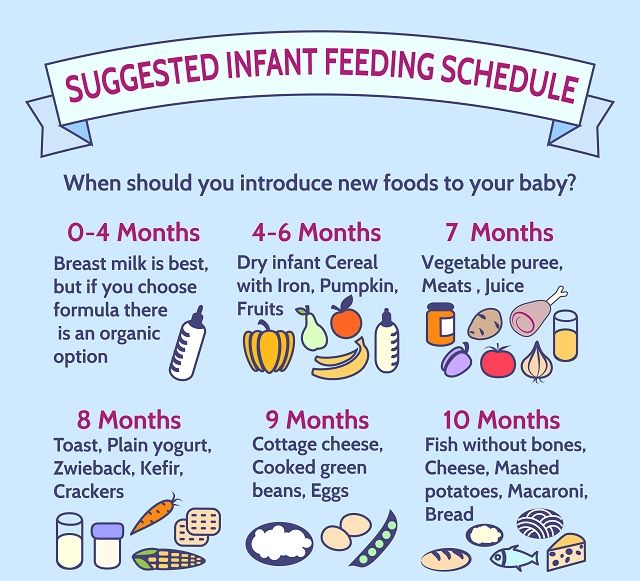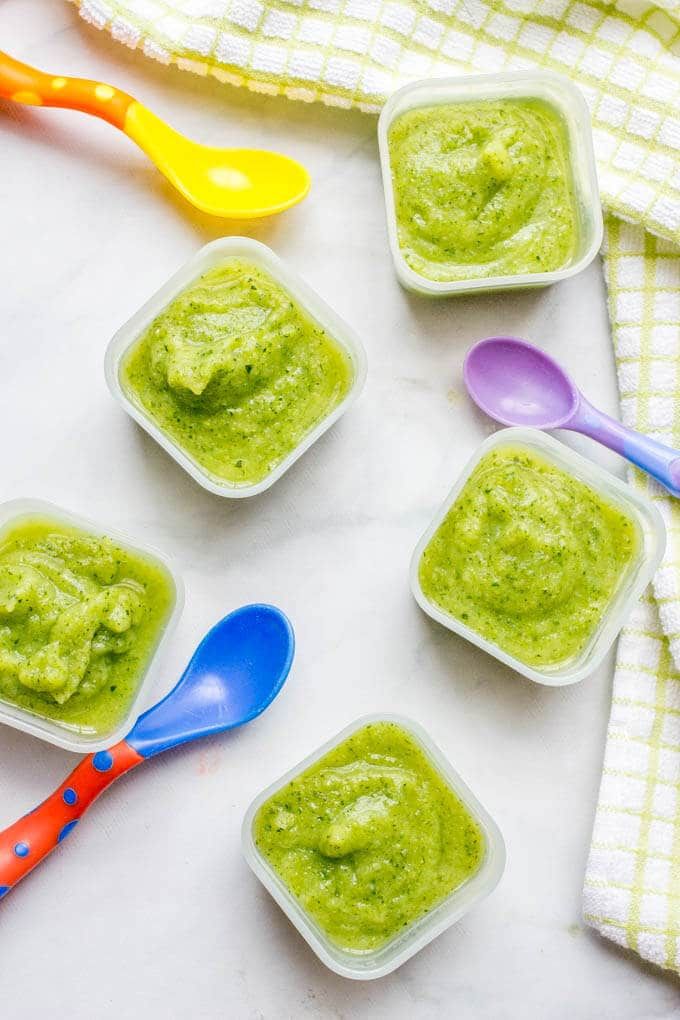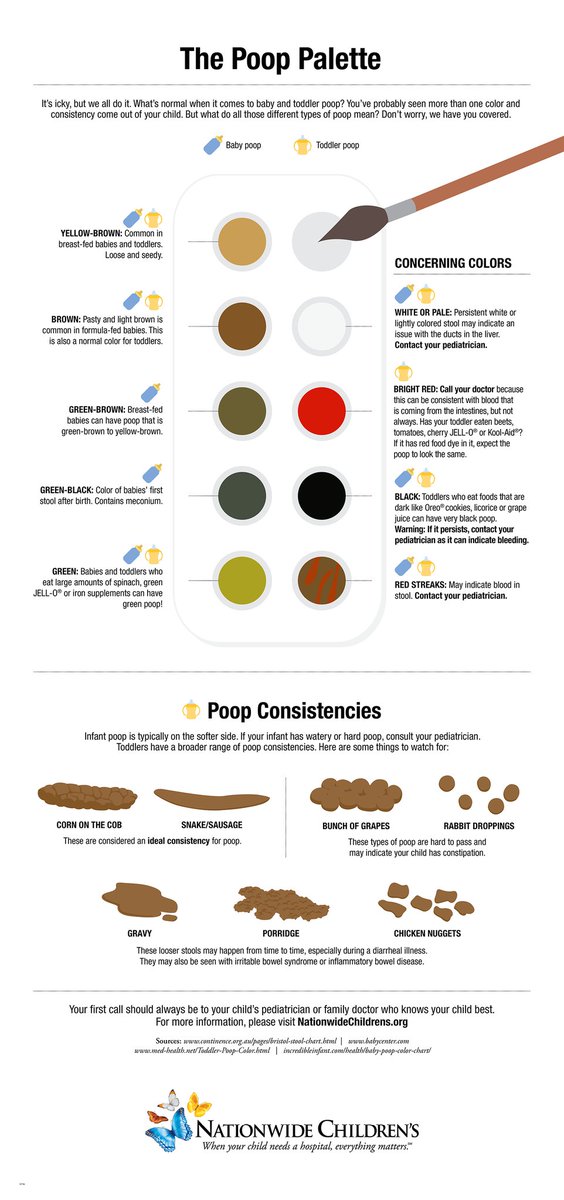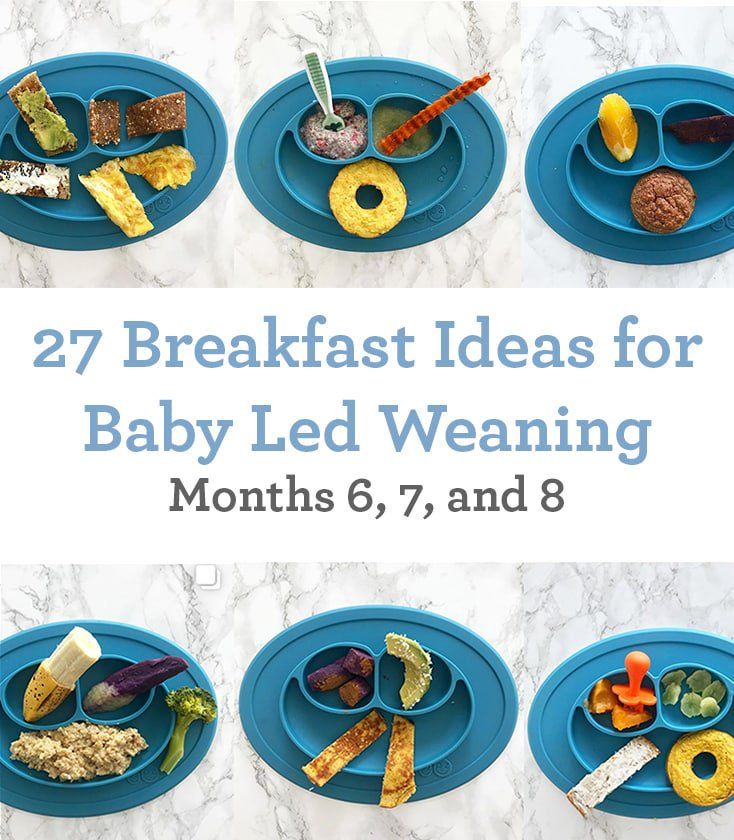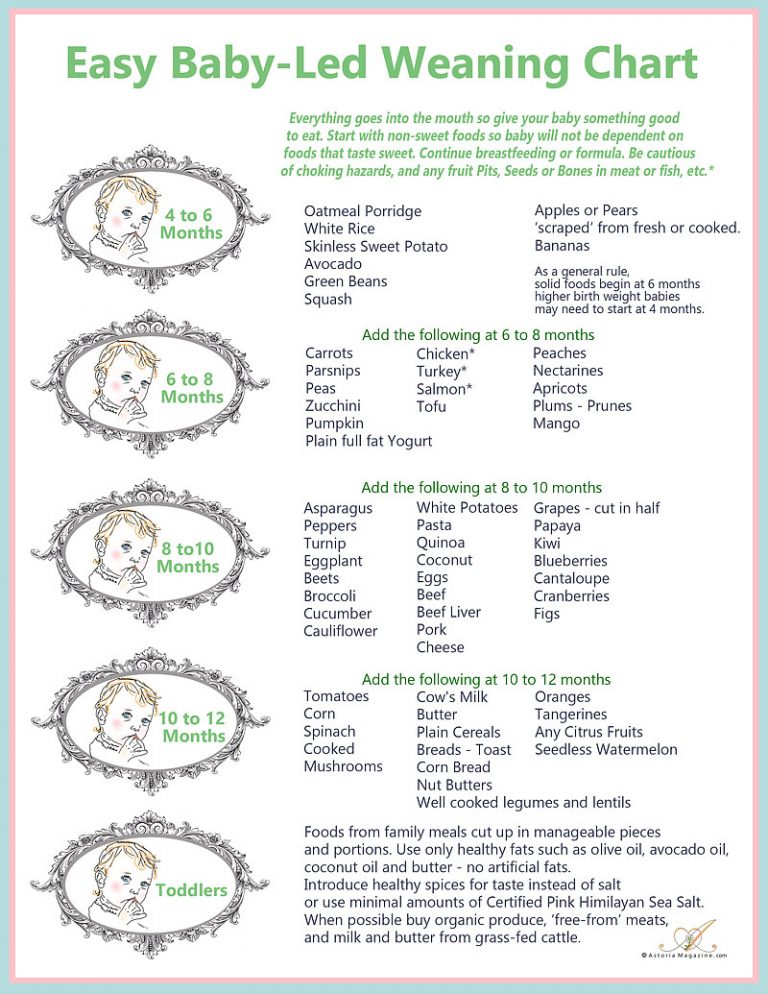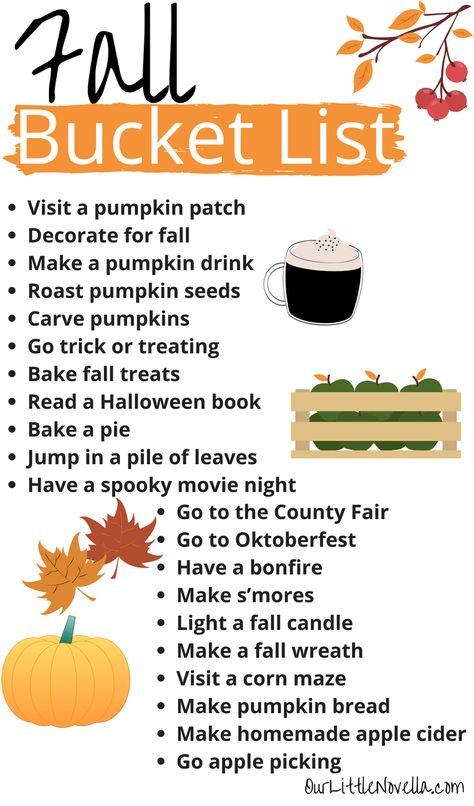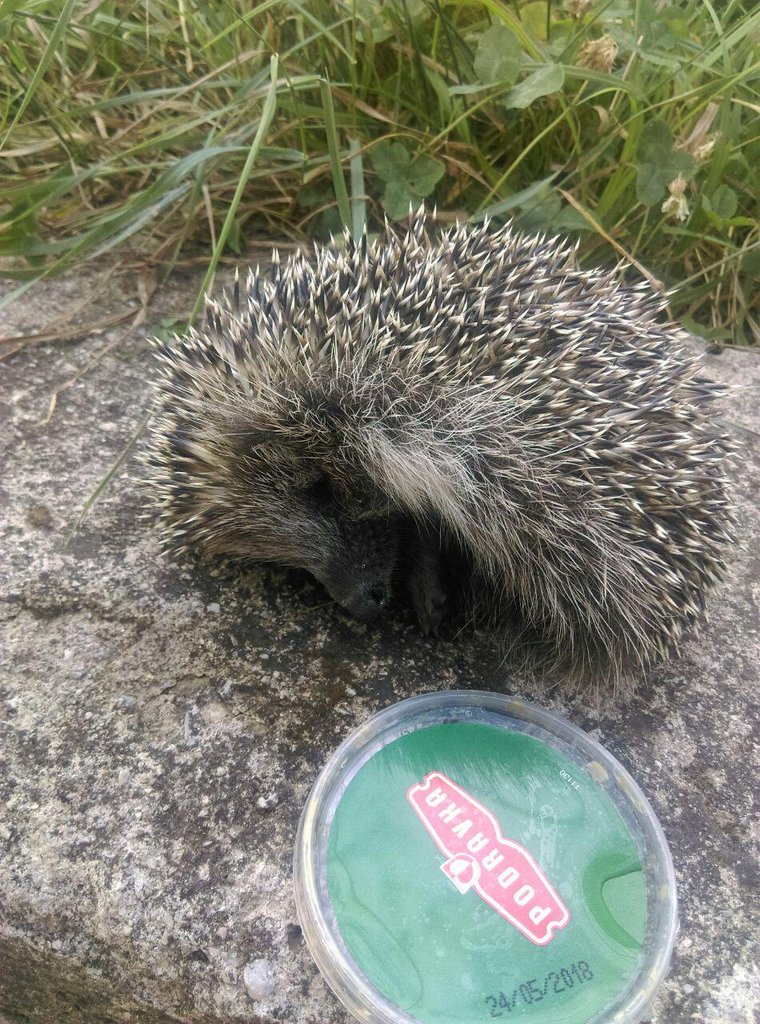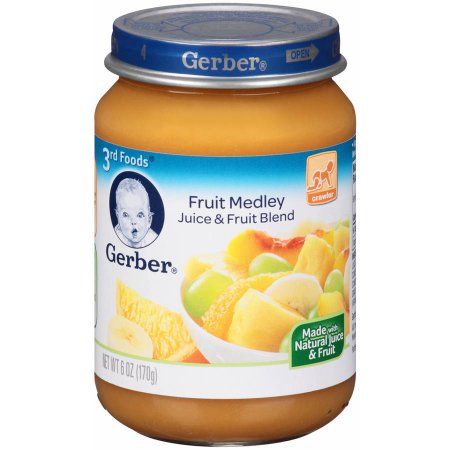Baby whole food feeding
How to Get Started with Baby Led Weaning: A Nutritionist's Guide
by Dana Simkins
Disclaimer: This post contains affiliate links which means I will receive a small commission (at no extra charge to you) should you choose to purchase a recommended product.
If you’re a parent, you may have heard of a style of infant feeding called Baby Led Weaning. I first learned of this approach in my Pediatric Nutrition course while working on my Master’s. I have since used the technique with my own three children! In this post I’ll talk you through all the basics and let you know how to get started with baby led weaning.
What is Baby Led Weaning?
The basic idea is that instead of feeding your baby pureed solids, you offer them whole foods. This allows baby to experience a variety of textures and flavors of food. Rather than being spoon-fed, your baby can regulate his own intake. And research suggests Baby Led Weaning babies are less prone to overeat later in childhood*. Babies have the ability to regulate their food intake based on physical hunger cues, something that becomes increasingly more difficult as we get older. Perhaps the longer we allow them to experience food in that way, the better.
You might be wondering…if she’s a proponent of Baby Led Weaning (BLW), then why are there recipes for pureed baby foods on this site? I’m a strong believer that you should do what works for you in parenting. If you feel that you might better nurture your child by offering pureed foods, or if the BLW approach makes you nervous, trust your instincts. Neither method is the “right” way, they are simply different and may benefit your baby in different ways. Keep reading to find out how I incorporate purees into Baby Led Weaning.
Feeling Unsure?If you’re feeling unsure because other people have told you it’s a bad idea, take a minute to check out my post on Dealing With Doubters. It’s sure to give you a confidence boost and set your mind at ease about how to get started with Baby Led Weaning the right way.
It’s sure to give you a confidence boost and set your mind at ease about how to get started with Baby Led Weaning the right way.
Many moms (including me!) choose to do Baby Led Weaning while still offering purees to their children. There are some foods, like yogurt, that offer great nutritional value for your infant (protein, probiotics) but can be messy to offer to a 6-month old without assistance. I go more in-depth on how to include purees in my Baby Led Weaning Myths post and my Starter Foods post.
How to Get Started With Baby Led WeaningWhen can I start Baby Led Weaning with my child?
What do I need to get started?
What sort of foods should I be offering?
When should I feed my baby solids? Do I still offer breast milk/formula?
But, my baby has no teeth…how can she chew?
What about choking?
The American Academy of Pediatrics does not recommend offering your baby any solids (pureed or not) before 6 months of age.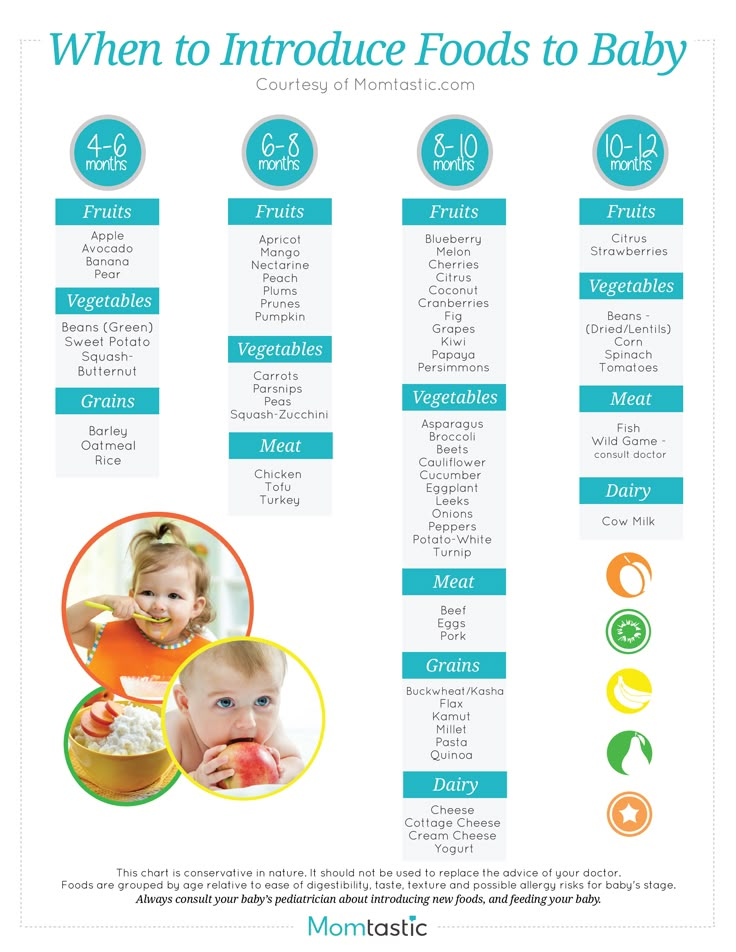 The majority of infants are not ready to eat solids before then, and there is evidence that it could result in the development of allergies since their digestive systems are not fully developed yet.
The majority of infants are not ready to eat solids before then, and there is evidence that it could result in the development of allergies since their digestive systems are not fully developed yet.
6 months is a general recommendation, and of course there are some babies who are ready earlier, and some who might even take a bit longer. All of this should be determined by you and your pediatrician, but generally a baby is ready to go if he/she:
- Shows interest in your food at meal times by leaning or reaching for it
- Can sit up unaided
- Has head and neck control
- Has lost the tongue-thrust reflex, and does not push food out of his/her mouth but is willing & able to swallow
Once you’ve read through this post about how to get started with baby led weaning make sure to prepare yourself with these fun and functional tools! They’ll help minimize the mealtime mess, and make meal prep a breeze.
What sort of foods should I be offering?
The Baby Led Weaning approach means you can offer your baby almost anything you’re eating with a few exceptions.
Be sure any food offered does not have too much salt or added sugar. Too much salt can overwhelm their tiny kidneys and added sugar offers no nutritional value, it just adds empty calories.
Do not offer:- Honey to children under 1 year of age. Honey can contain botulinum toxin which can cause botulism in infants.
- Cow’s milk to children under 1 year of age. Babies can’t handle the proteins in cow’s milk before 1 year of age. However, yogurt and cheese made from cow’s milk are acceptable since the proteins in these food have been partially broken down.
- Small, hard foods like whole nuts, popcorn and peanut butter (on its own) can all be serious choking hazards.
 These should not be offered to infants.
These should not be offered to infants.
- Bread (limit to one slice a day since it tends to be high in salt/sugar and may cause constipation)
- Fish high in mercury content such as tuna, mackerel, or swordfish (limit to two servings per week to be safe)
- Processed foods like potato chips, canned soups/sauces, condiments and fried foods tend to be loaded with salt & sugar and offer little to no nutritional value.
- If there is history of food allergy in your family you may want to introduce foods one at a time to be sure there is no adverse reaction. Talk to your doctor about this before starting any solids.
- The following foods can be a choking hazard and should be sliced up before offering to baby: whole grapes, bony fish, fruits with pits (cherries, olives, etc.
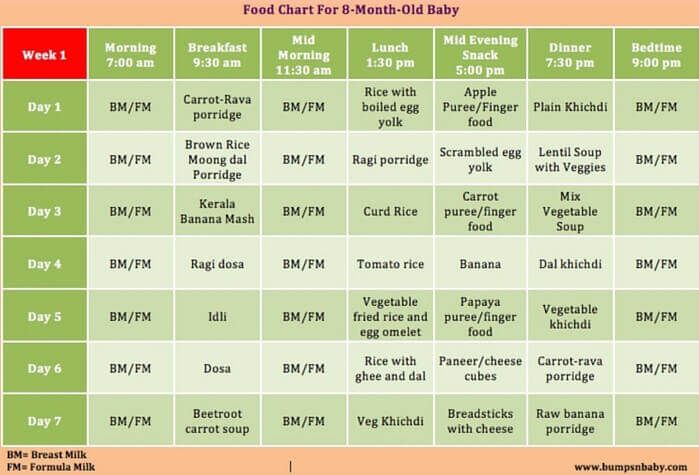 )
)
- Fish fingers (tilapia works really well simply breaded)
- Chicken (grilled or roasted, cut into strips)
- Steamed Broccoli Florets
- Steamed Carrots (larger pieces not baby carrots)
- Cavatappi (or other “curly” pasta, like fusilli)
- Sweet Potato “Fries” (cut sweet potatoes into strips and bake until soft enough to mash with your fingers)
- Avocado cut into long pieces
- Pears, apples, cucumber, peeled & cut into long pieces
- Canned/jarred mandarin wedges in water (I recommend these over fresh because there are no seeds)
- Toast strips with hummus spread
- Cheese sticks
- Banana with peel as a handle (see picture below)
When should I be feeding my baby solids? Do I still offer breast milk/formula?
Breast milk/formula should still make up the majority of baby’s diet until 1 year of age.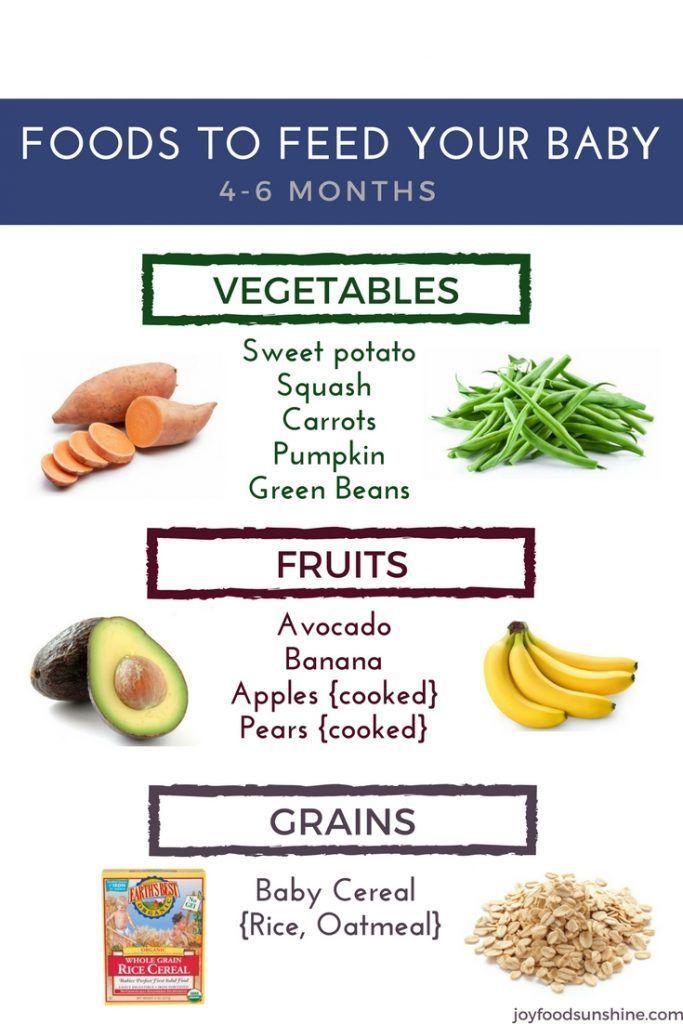 Babies’ tummies are very small, and breast milk/formula is much more nutrient rich than any food. It provides them with everything they need for the first year. You may have heard this saying before, “Food before one is just for fun!” It’s true, for most babies breast milk/formula offers all they need until their first birthday.
Babies’ tummies are very small, and breast milk/formula is much more nutrient rich than any food. It provides them with everything they need for the first year. You may have heard this saying before, “Food before one is just for fun!” It’s true, for most babies breast milk/formula offers all they need until their first birthday.
The introduction of solid foods before 1 year is a “bonus”, may help avoid the development of allergies and allows them exposure to various flavors and textures.
To be sure your baby is getting enough nutrition from milk, I recommend nursing/offering a bottle before each “meal” of solid foods. This will also assure that your baby is in a good mood and doesn’t get frustrated while trying to eat.
What about choking?
First of all, it is very important that you know the difference between gagging and choking (but also know infant CPR).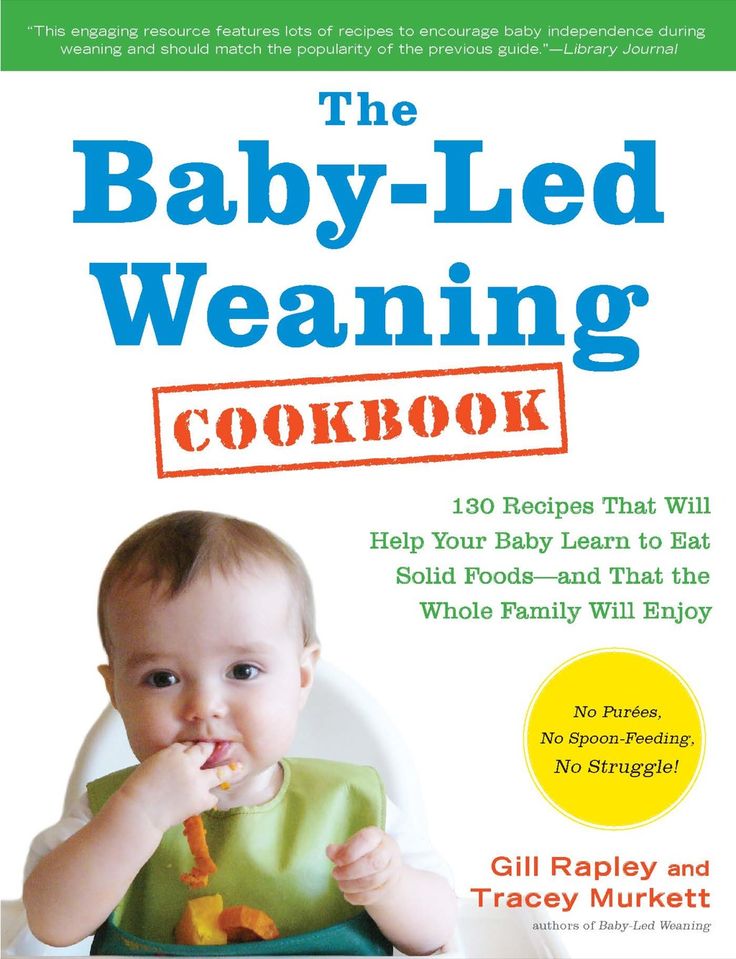 It is totally normal for your little one to gag a bit as they are learning to eat. It takes a while for them to learn the proper way to move food around their mouth. Here is an example of my son gagging when we began Baby Led Weaning at 6 months. Note how he moves the food around and continues to chew…
It is totally normal for your little one to gag a bit as they are learning to eat. It takes a while for them to learn the proper way to move food around their mouth. Here is an example of my son gagging when we began Baby Led Weaning at 6 months. Note how he moves the food around and continues to chew…
Basically, if baby gags but keeps on happily eating and shows no signs of distress, everything is fine. You will know if she’s choking because her eyes will get wide, she won’t be getting any air and she will stop eating. This NEVER happened with with either of my children, and is highly unlikely with Baby Led Weaning.
Because baby is deciding how much food to take in and because BLW encourages chewing rather than sucking, you’ll find babies eat more slowly and very small bits at a time. Offering bigger pieces can help avoid choking, too.
Offering bigger pieces can help avoid choking, too.
In the unlikely event your baby is actually choking, call 911 immediately and be prepared with infant CPR techniques.
Still not sure what to feed baby?If you still aren’t sure where to begin, I urge you to check out my 4-week Baby Led Weaning Family Meal Plan! It’s a whole month of original recipes for your BLW baby and everyone else under your roof. Cook once, feed everyone! Along with the recipes are super organized shopping lists and serving tips for various ages (6m+).
For everything you need to know about Baby Led Weaning, check out this book by Gill Rapley and Tracey Murkett, the “creators” of Baby Led Weaning. I write that in quotations because they write in their book that parents have been doing this for a very long time, they just gave it a name and came up with tips, tricks and guidelines.
For some Baby Led Weaning recipes, check out Baby Led Feeding .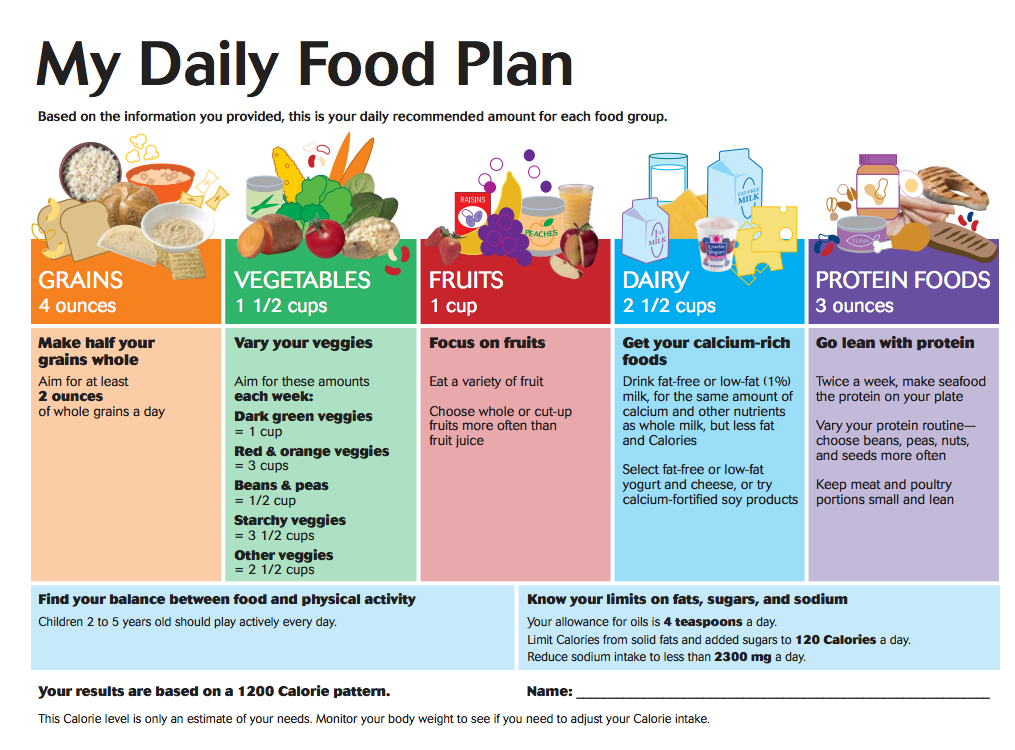 It’s chock full of healthy, tasty options for your little one starting at 6 months! A great tool to get you started with Baby Led Weaning.
It’s chock full of healthy, tasty options for your little one starting at 6 months! A great tool to get you started with Baby Led Weaning.
Do you think Baby Led Weaning is something you might try? Any tips on how to get started with Baby Led Weaning? Post about your experience/opinion in the comments!
65 whole food finger foods for baby
The best thing about this list of whole food finger foods is that are they very easy to prepare and some require no preparation at all. In fact, many of the ingredients are already sitting in your fridge, pantry or fruit bowl, ready to be washed, peeled, cut and served.
Offering your baby a wide variety of food is incredibly important in the first year of life when he is more likely to accept them.
Many of the finger food ideas I see on BLW (Baby Led Weaning) forums are some kind of mixed dishes, like muffins or egg creations with fruit or vegetables mixed in them. I think they are ok to serve from time to time but ultimately we want the baby to get a lot of exposure to individual foods so that he can learn to like them.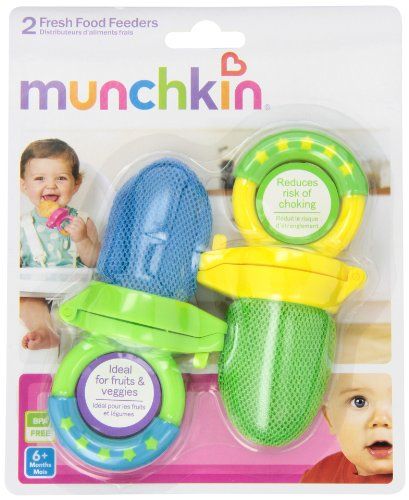
You can read about the pros and cons of Baby Led Weaning here, check if your baby is ready for solids here and find out why I chose a mixed approach to starting solids here.
If you would like to get the whole framework and all the steps to start your baby on solids using the mixed approach, using both finger foods and purees, check my Stress-Free Solids program – it’s completely online and has videos of babies eating both finger foods and purees, in addition to recipes, schedules and the latest scientific advice on introducing allergens.
On the list you will see things like nori, raw baby spinach, raw green onion or artichoke hearts. You may think that they are a strange choice for baby finger food but in fact they perfectly appropriate and very nutritious. Who says we have to be limited to bananas and avocados? You may be surprised by your baby’s preferences!
Safety concerns
The best thing you can do to ensure your baby is safe is to stay with her at all times when she is eating. Next, avoid choking hazards.
Next, avoid choking hazards.
I also highly recommend taking a CPR course and/or learn the Heimlich maneuver in a certified first-aid training class.
To keep finger foods safe, make sure they pass the “squish test”. Take a piece and press it with two fingers. If it can be squished easily between the fingers, this food is safe for your baby.
Research shows that safe finger foods are not more likely to make your baby choke than purees or milk. According to the team conducting one study, foods to avoid are: “…anything that couldn’t be mashed on the roof of the mouth with the tongue; very small foods such as nuts, grapes, sweets and food with pits; raw veggies; under-ripe or hard fruit, including raw apple; citrus fruits, unless each segment had been peeled; whole nuts and popcorn; and foods cut into coins, such as sausages or carrots.
The shape of finger foods matters
Your baby may be ready to start experimenting with finger foods as early as at 6-7 months.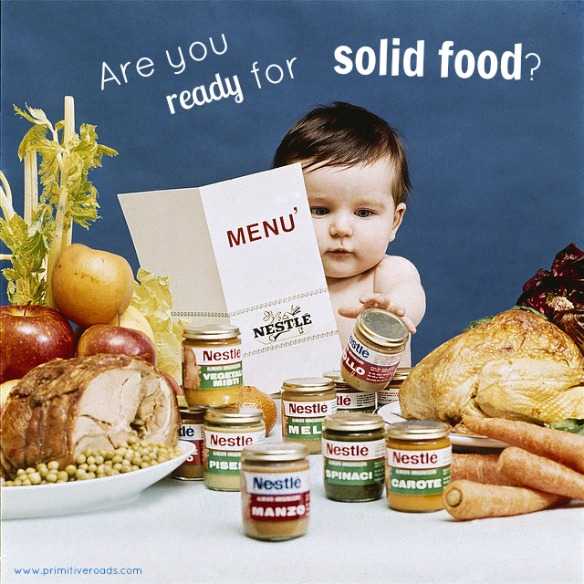 At this stage, he can only use his whole palm to pick up the food. So it is important to cut the food into large disks, large slices or sticks the size of your finger that can be held in a hand comfortably.
At this stage, he can only use his whole palm to pick up the food. So it is important to cut the food into large disks, large slices or sticks the size of your finger that can be held in a hand comfortably.
Too slippery to hold? Wash well and leave the skin partially on for a better grip or dust food with baby cereal.
If you would like more tips, I made a Facebook video on how to cut finger food sot make them less slippery and make them easier to hold (including using a special tool I love).
By 8-10 months most babies can use their pincer grasp, i.e. their fingers to pick up smaller pieces of food. Finger foods cut into small shapes about the size of a dime will be the best match to their abilities at this point. All the foods from the list below can be cut smaller to allow babies to practice their pincer grasp.
You may be surprised to know that babies are also very good at eating thick purees with their fingers. Thick oatmeal, mashed potatoes or any thick puree will make a perfect (but messy) finger food for your little one. Food that can be shredded like cheese or shaped into balls like sticky rice can also be served as finger foods.
Food that can be shredded like cheese or shaped into balls like sticky rice can also be served as finger foods.
To make it easier to print it out or save it on your computer, download the pdf here.
65 whole food finger foods for baby
Grains:
Mashed potatoes, to be eaten with fingers
Noodles
Oatmeal, thick enough to be eaten with fingers
Polenta, cooked, cooled and cut into sticks
Pasta
Quesadilla, wedges
Sticky rice balls
Toast, sticks
Vegetables
Artichoke hearts, steamed
Avocado, cut into wedges
Cucumber, sliced
Eggplant, slices or sticks, roasted or pan-fried
Kale and other tough greens, sautéed or steamed
Onions, green (raw) – you will be surprised
Seaweed sheets / Nori
Tomatoes, sliced
Beets, roasted (I recommend the pink variety, for obvious reasons :))
Broccoli florets, steamed or roasted
Butternut squash, sliced and roasted or steamed
Carrot, sticks or slices, roasted or steamed
Cauliflower florets, roasted or steamed
Green beans, steamed or pan-fried
Parsnip, sticks, roasted or steamed
Potato wedges, roasted
Spinach, baby, raw
Sweet potato, wedges, roasted or steamed
Zucchini, slices or wedges, roasted or steamed
Fruit:
Apples, wedges, steamed, microwaved or roasted
Apricots, cut in half
Banana, cut into sticks or partially peeled
Figs, wedges
Grapes, cut into halves lengthwise (choking hazard if left whole!)
Kiwi, wedges or slices
Mango, sticks or slices
Melon, sticks or slices
Orange, segments, peeled
Peach, halves or slices
Pear, very ripe, wedges
Persimmon/sharon fruit, slices or wedges
Pineapple, sticks or slices
Plums, halves or wedges
Raspberries – cut in half if too big
Strawberries, whole
Watermelon, sticks
Protein:
Beans, very well cooked or canned, cut in half if big
Beef, braised, separated into sizable chunks
Beef, steak, cut into slices
Cheese, shredded or cut in thin slices
Chicken, sticks or thick slices
Cottage cheese, to be eaten with fingers
Duck meat, sticks or thick slices
Eggs, boiled, wedges
Eggs, omelet, squares or slices
Eggs, scrambled
Eggs, soft boiled, with toast sticks for dipping
Fish, roasted, fried, tinned or steamed, separated into flakes
Lamb, braised, separated into sizable chunks
Lamb cutlets, slices
Meatballs, slices or served whole
Peanut butter, to spread thinly over a toast
Pork, braised, separated into sizable chunks
Pork, cutlets, slices
Tempeh, sticks
Tofu, baked or stir-fried, sticks
Yogurt, to be eaten with fingers
Would you like me to send you the list in a downloadable format?
Optimal nutrition for children over 6 months of age
Submitted by useradmin on Thu, 08/12/2021 - 21:24
Starting from the 6th month of life, in addition to breast milk (or its substitutes), your baby needs additional foods (complementary foods) to ensure healthy growth and development. In the absence of other recommendations from your pediatrician, the approximate time for the introduction of complementary foods is the 20-26th week of life (24th is optimal). Carefully study the characteristics of the products before introducing them into your baby's diet. It is important that the child gets used to natural food from the very beginning. Commercial foods may contain ingredients not recommended for baby food, including excess fat, salt, sugar, and preservatives; in addition, its consistency differs from that of natural, local products.
In the absence of other recommendations from your pediatrician, the approximate time for the introduction of complementary foods is the 20-26th week of life (24th is optimal). Carefully study the characteristics of the products before introducing them into your baby's diet. It is important that the child gets used to natural food from the very beginning. Commercial foods may contain ingredients not recommended for baby food, including excess fat, salt, sugar, and preservatives; in addition, its consistency differs from that of natural, local products.
Your pediatrician will help you decide which product to introduce first complementary foods based on your child's nutritional and health status.
It is still necessary to continue breastfeeding on demand both day and night.
Breast milk is still the most important part of your baby's diet. There is no need to supplement your baby with substitutes (adapted milk formulas) as well as follow-up formulas (adapted milk formulas for babies over 6 months), as breast milk provides the baby with all the nutrients he needs.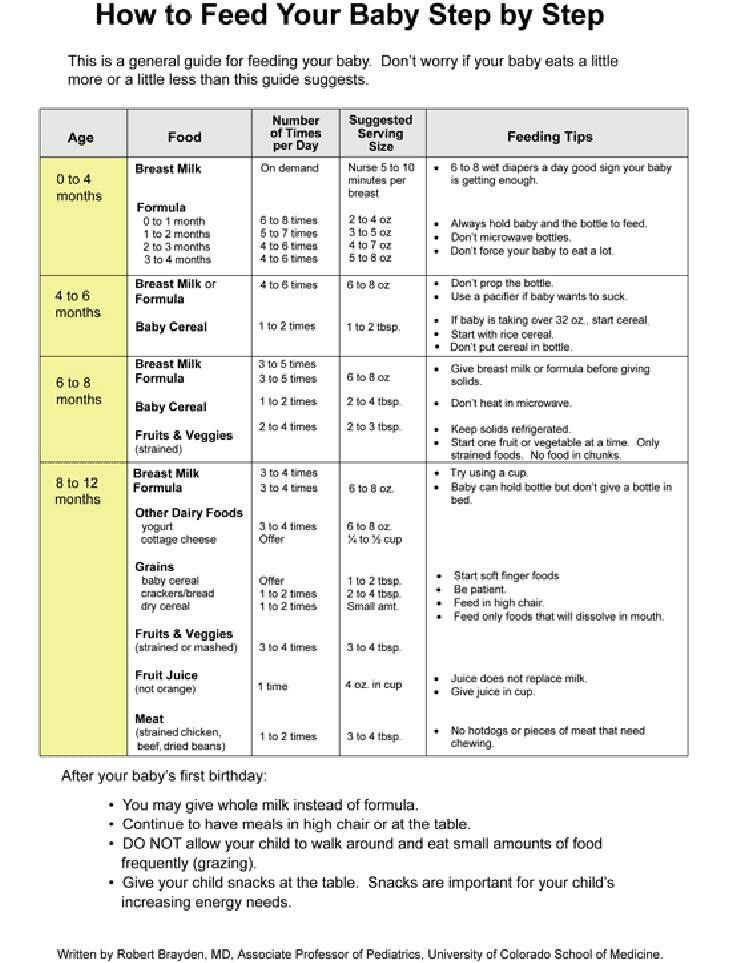
Don't forget to breastfeed your baby after each feeding.
When introducing complementary foods, it is important to consider several important points:
- Frequency : offer your child new foods (complementary foods) 2 times a day.
- Volume : The introduction of new foods into a child's diet should be gradual. Offer complementary foods for trial, increasing by 2-3 tablespoons at each meal.
- Consistency: The food should be thick enough to make it easier to spoon feed and help the baby get used to food with a different texture than breast milk.
- Variety :
- Start with one new product. Give it for three days, while paying attention to the reaction of the child. It is not recommended to introduce several products at the same time - this can provoke an allergic reaction and make it difficult to determine the product that should be excluded from the diet.

- Consider cereals as first food, such as thick porridge (rice, buckwheat or oatmeal) without added milk.
- Vegetable purees - from pumpkin, carrots, potatoes, zucchini, cabbage, spinach - are recommended to be introduced earlier than fruits. It is preferable to give the child local seasonal vegetables and fruits.
- After the porridge is fully introduced into the diet, you can gradually start adding egg, fruit, leafy greens, meat or dairy products to it.
- Start with one new product. Give it for three days, while paying attention to the reaction of the child. It is not recommended to introduce several products at the same time - this can provoke an allergic reaction and make it difficult to determine the product that should be excluded from the diet.
- Baby orientation: It may take a while for your baby to get used to eating other than breast milk. Be patient and actively encourage your child. Don't force him to eat if he doesn't want to. Observe your baby and respond to his signals. Feed your baby slowly and patiently, at his own pace. Wait until he chews and swallows before offering something again. Stop feeding if the child refuses a new food for him, try to offer it another time. Use a separate plate so that you can see if the child has eaten everything that was offered to him.

- Hygiene: Good hygiene (cleanliness) is necessary to prevent diarrhea and other illnesses in the child. Use clean utensils and utensils when preparing food and feeding. Store food in a safe and clean place in accordance with the terms and rules indicated on them. Remember to follow the basic rules of personal hygiene - wash your hands with soap and water before preparing food and feeding the child, after using the toilet, after performing hygiene procedures and washing the child. Wash your child's hands before eating.
Products not recommended for this age:
- Med.
- Whole cow's (also goat's) milk. It is not recommended to give to children in the first year of life, because its composition does not meet the needs of infants and it can contribute to the development of anemia and allergies. To prepare cereals, you can use a small amount (diluted 1: 1 with boiled water) of cow's milk.
- Citrus fruits (lemon, orange, mandarin).

- Tropical fruits and vegetables.
- Sweets, pastries, confectionery.
- Fried snacks (chips, croutons, snacks), fast foods (fast food).
- Tea (black, green, herbal), carbonated and/or sugary drinks, colorants.
- Industrially processed meat products (sausages, sausages).
- Salt, spices, food additives.
- Any kind of nuts and seeds.
Always think about safety: do not give your child nuts, popcorn, small fruits or whole grapes, pieces of solid food that can choke on.
Feeding according to baby's needs
When you start weaning, the best time to do so is during the day when both you and your baby are in a good mood and relaxed. It may take a long time for a child to get used to a new food (complementary foods). Be patient and actively encourage him to eat, but don't force him. These are new skills for a toddler and take time and patience to master them.
Watch your child and respond to his signals. Feed him slowly and patiently, at his pace. Try different combinations of foods, flavors, and textures to get your little one accustomed to a varied diet. Wait until the child eats what you gave him before offering the next spoon. Stop feeding when the baby shows that he is full.
Feed him slowly and patiently, at his pace. Try different combinations of foods, flavors, and textures to get your little one accustomed to a varied diet. Wait until the child eats what you gave him before offering the next spoon. Stop feeding when the baby shows that he is full.
The child demonstrates that he is hungry in the following ways: he becomes anxious when he sees ready food, moves forward in the highchair, opens his mouth.
The child shows that he has eaten as follows: eats more slowly, pushes food away from himself, does not want to open his mouth, turns away.
Australian Article
Off
Cover Image
Image
UN040622.jpg
Keywords
feeding young child
Home > Information for parents > Advice for parents > Nutrition for children from 1 to 3 years old
Nutrition for children aged 1 to 3 years
The period from 1 to 3 years of life is a crucial stage in the transition to an adult type of nutrition, which has certain features.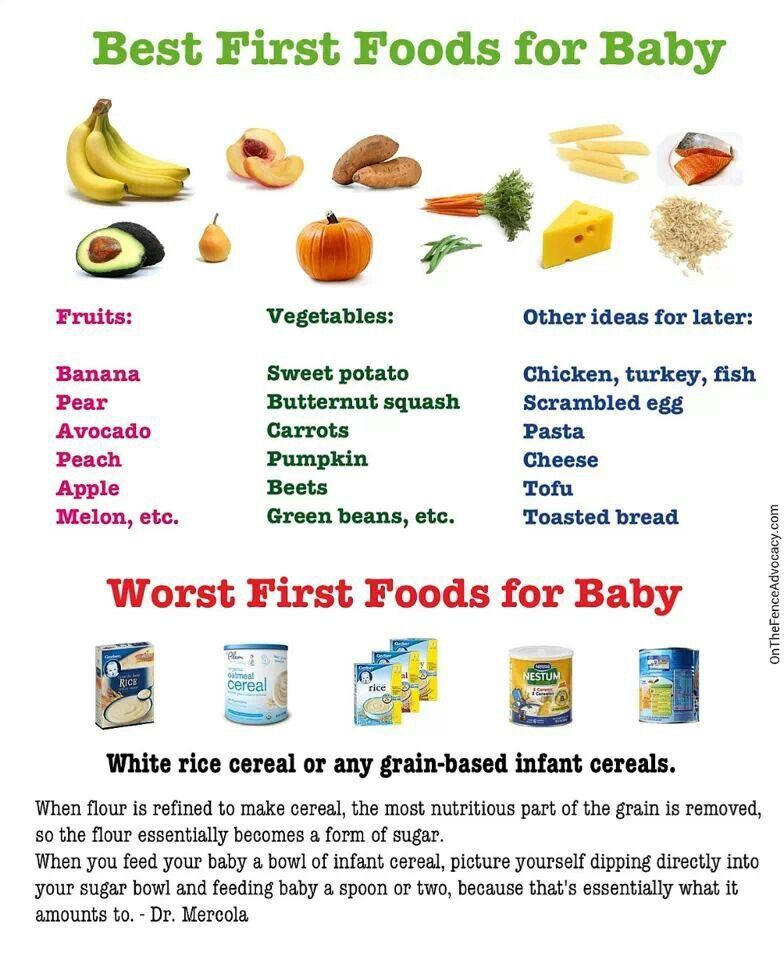 In order to ensure that all the necessary nutrients enter the child's body and at the same time prevent an excess of individual nutrients, nutrition should be balanced and varied.
In order to ensure that all the necessary nutrients enter the child's body and at the same time prevent an excess of individual nutrients, nutrition should be balanced and varied.
The daily amount of food for children aged 1 to 1.5 years should be 1000-1200 g, from 1.5 to 3 years - 1200-1500, the amount of food in one feeding should not exceed 300-350 ml. The diet consists of three main meals per day and two snacks. It is considered optimal when breakfast is 25% of the total energy density of the diet, lunch is 30–35%, dinner is 20%, and additional meals are about 10%. In general, the child can eat the same food as the rest of the family.
In the diet of a child 1-3 years of age must be present daily : animal or poultry meat, dairy and sour-milk products, vegetables, fruits, bread, cereals, vegetable and butter; fish and eggs are included in the diet 2-3 times a week.
Cereal products: bread - 2-3 servings per day, cereals and side dishes - 1 time per day
Fruit and/or vegetables: at least 5 times a day
Dairy products: at least 3 servings per day (including those used to make cereals, yoghurts, fermented milk drinks, cottage cheese, infant formula or breast milk).
Domestic pediatricians recommend, when compiling a diet for children aged 1–3 years, preference should be given to specialized children's dairy products of industrial production that meet high quality requirements and safety indicators for this age. Most children's dairy products are additionally enriched with vitamins and/or minerals and other biologically active components, taking into account the physiological needs of children of this age. At the same time, in foreign recommendations, children over 1 year old are offered the gradual introduction of whole cow's milk, which is rich in fats necessary for proper growth and development, the absorption of vitamins A and D, the development of the child's brain and nervous system.
Meat dishes: 2-3 times a day
Fish dishes: 2-3 servings per week
Eggs: 2-3 per week
Dietary fats: 3-4 teaspoons of butter and/or vegetable oils per day
When cooking, use the minimum amount of salt and sugar, and do not add them to industrial products.